Hungerford T.W., Shaw D.J. Contemporary Precalculus: A Graphing Approach
Подождите немного. Документ загружается.

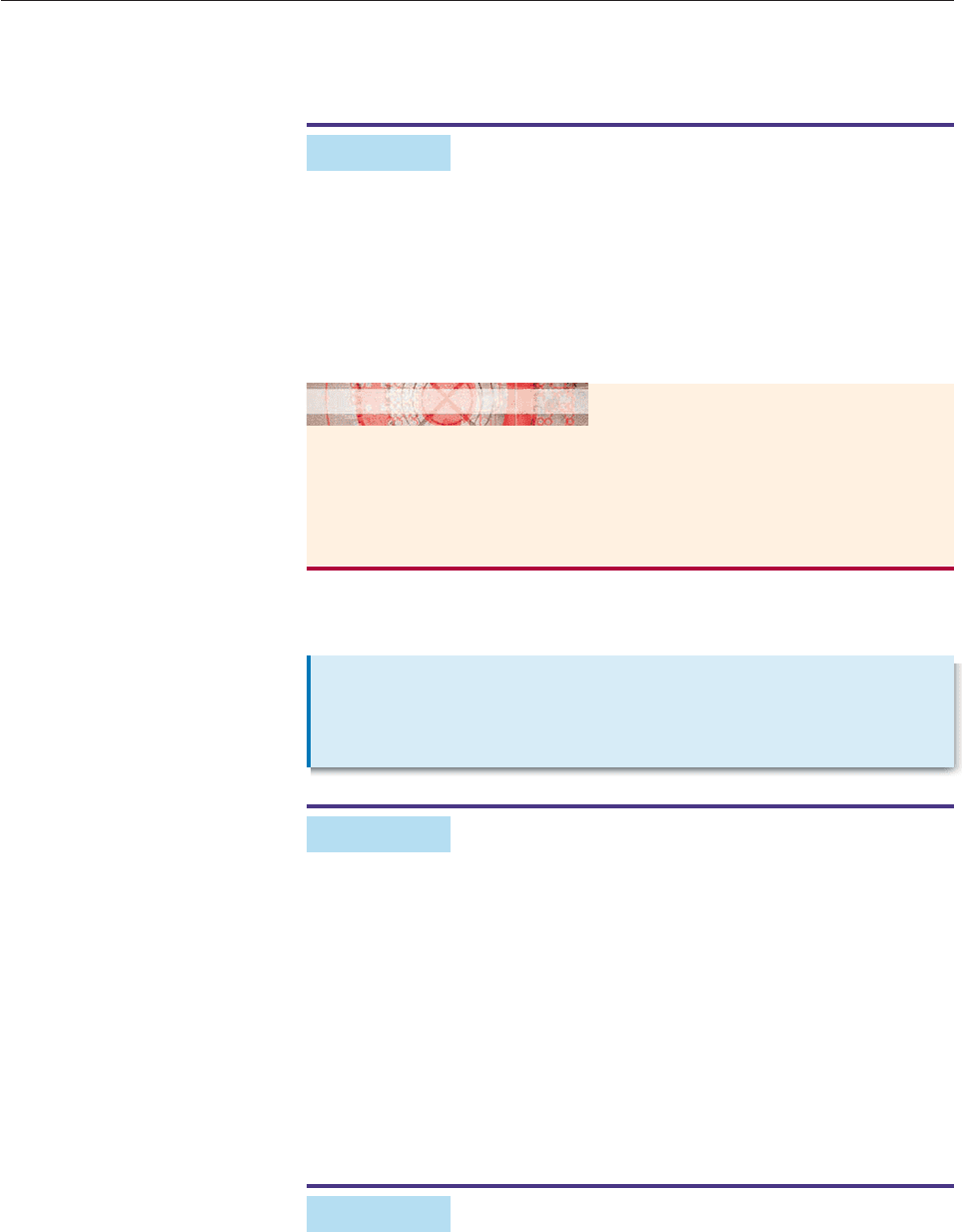
In practice, you do the middle part in your head and simply write
3x 5x 4x 12x. ■
EXAMPLE 2
In more complicated expressions, eliminate parentheses, use the commutative law
to group like terms together, and then combine them.
(a
2
b 3 c
) (5ab 7 c
) 7a
2
b a
2
b 3 c
5ab 7 c
7a
2
b
Regroup a
2
b 7a
2
b 3 c
7 c
5ab
144 2 443 1 44424443
Combine like terms: 8a
2
b 4 c
5ab.
■
The examples in the Caution Box illustrate the following.
EXAMPLE 3
Compute: (4x
3
5x
2
7x 2) (2x
3
x
2
6x 8).
SOLUTION
Eliminate parentheses: 4x
3
5x
2
7x 2 2x
3
x
2
6x 8
Group like terms: (4x
3
2x
3
) (5x
2
x
2
) (7x 6x) (2 8)
Combine like terms: 2x
3
6x
2
13x 6 ■
To multiply algebraic expressions, use the distributive law repeatedly, as
shown in the following examples. The net result is to multiply every term in the
first polynomial by every term in the second.
EXAMPLE 4
Compute ( y 2)(3y
2
7y 4).
936 APPENDIX 1 Algebra Review
CAUTION
Be careful when parentheses are preceded by a minus sign: (b 3) b 3 and not b 3.
Here’s the reason: (b 3) means (1)(b 3); hence by the distributive law,
(b 3) (1)(b 3) (1)b (1)3 b 3.
Similarly, (7 y ) 7 (y ) 7 y.
Rules for
Eliminating
Parentheses
Parentheses preceded by a plus sign (or no sign) may be deleted.
Parentheses preceded by a minus sign may be deleted if the sign of every
term within the parentheses is changed.
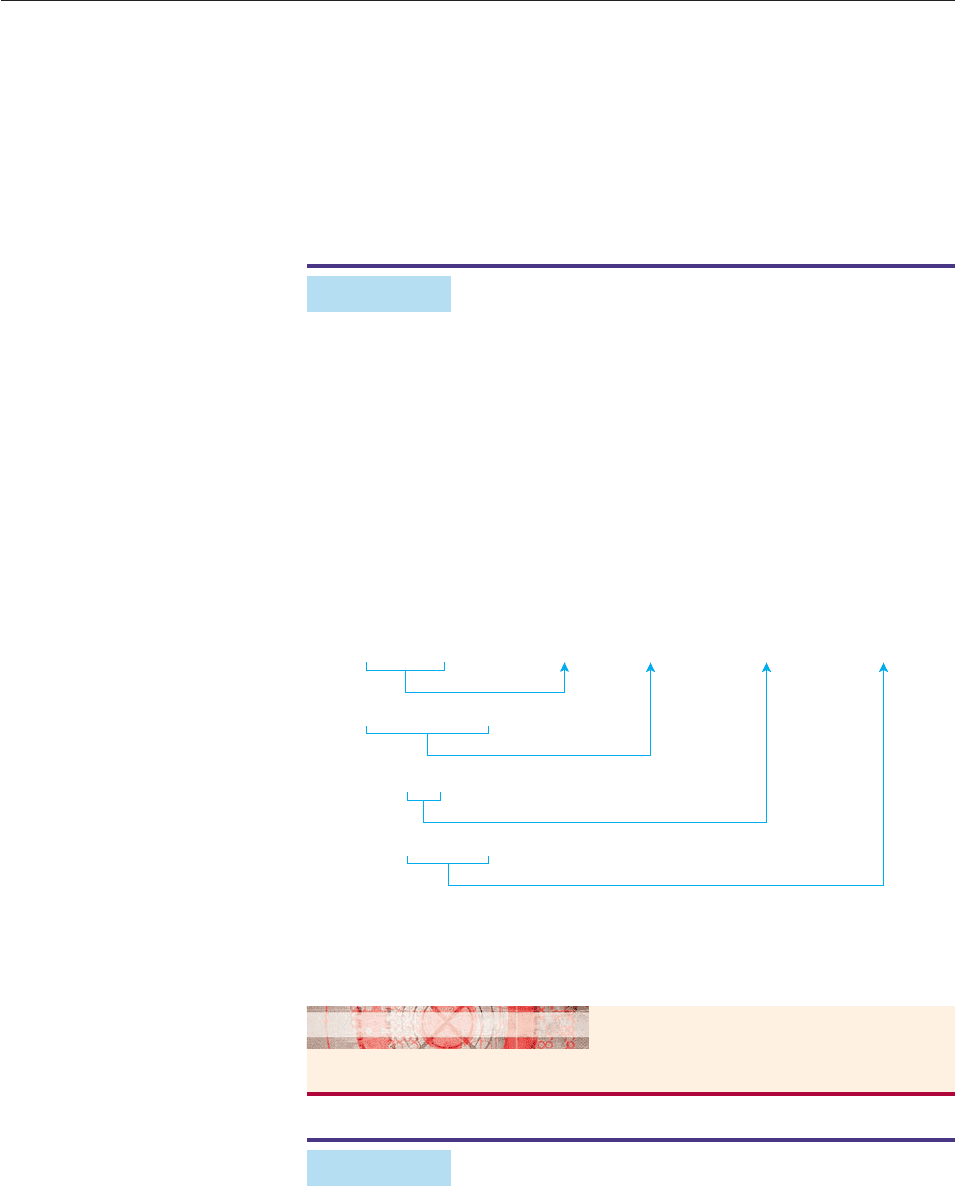
SECTION 1.B Arithmetic of Algebraic Expressions 937
SOLUTION We first apply the distributive law, treating (3y
2
7y 4) as a
single number.
( y 2)(3y
2
7y 4) y(3y
2
7y 4) 2(3y
2
7y 4)
Distributive law: 3y
3
7y
2
4y 6y
2
14y 8
Regroup: 3y
3
7y
2
6y
2
4y 14y 8
14243 14243
Combine like terms: 3y
3
13y
2
18y 8. ■
EXAMPLE 5
Compute (2x 5y)(3x 4y).
SOLUTION Treat 3x 4y as a single number, and use the distributive law.
(2x 5y)(3x 4y) 2x(3x 4y) 5y(3x 4y)
Distributive law: 2x
3x 2x
4y (5y)
3x (5y)
4y
Regroup 6x
2
8xy 15xy 20y
2
1442443
Combine like terms: 6x
2
7xy 20y
2
. ■
Observe the pattern in the second equation of Example 5 and its relationship
to the terms being multiplied.
(2x 5y)(3x 4y) 2x
3x 2x
4y (5y)
3x (5y)
4y
First terms
(2x 5y)(3x 4y)
Outside terms
(2x 5y)(3x 4y)
Inside terms
(2x 5y)(3x 4y)
Last terms
This pattern is easy to remember by using the acronym FOIL (First, Outside,
Inside, Last). The FOIL method makes it easy to find products such as this one
mentallly, without the necessity of writing out the intermediate steps.
EXAMPLE 6
(3x 2)(x 5) 3x
2
15x 2x 10 3x
2
17x 10. ■
First Outside Inside Last
CAUTION
The FOIL method can be used only when multiplying two expressions that each have two terms.

938 APPENDIX 1 Algebra Review
EXERCISES 1.B
In Exercises 1–54, perform the indicated operations and
simplify your answer.
1. x 7x 2. 5w 7w 3w
3. 6a
2
b (8b)a
2
4. 6x
3
t
7x
3
t
15x
3
t
5. (x
2
2x 1) (x
3
3x
2
4)
6.
u
4
(3)u
3
u
2
1
u
4
2u
3
5
u
2
7.
u
4
(3)u
3
u
2
1
u
4
2u
3
5
u
2
8. (6a
2
b 3a c
5ab c
) (6ab
2
3ab 6ab c
)
9. [4z 6z
2
w (2)z
3
w
2
] (8 6z
2
w zw
3
4z
3
w
2
)
10. (x
5
y 2x 3xy
3
) (2x x
5
y 2xy
3
)
11. (9x x
3
1) [2x
3
(6)x (7)]
12. (x y
z) (x y
z) (y
z x)
13. (x
2
3xy) (x xy) (x
2
xy)
14. 2x(x
2
2) 15. (5y)(3y
2
1)
16. x
2
y(xy 6xy
2
)
17. 3ax(4ax 2a
2
y 2ay) 18. 2x(x
2
3xy 2y
2
)
19. 6z
3
(2z 5) 20. 3x
2
(12x
6
7x
5
)
21. 3ab(4a 6b 2a
2
b) 22. (3ay)(4ay 5y)
23. (x 1)(x 2) 24. (x 2)(2x 5)
25. (2x 4)(x 3) 26. ( y 6)(2y 2)
27. ( y 3)( y 4) 28. (w 2)(3w 1)
29. (3x 7)(2x 5) 30. (ab 1)(a 2)
31. ( y 3)(3y
2
4) 32. ( y 8)( y 8)
33. (x 4)(x 4) 34. (3x y)(3x y)
35. (4a 5b)(4a 5b) 36. (x 6)
2
37. ( y 11)
2
38. (2x 3y)
2
39. (5x b)
2
40. (2s
2
9y)(2s
2
9y)
41. (4x
3
y
4
)
2
42. (4x
3
5y
2
)(4x
3
5y
2
)
43. (3x
2
2y
4
)
2
44. (c 2)(2c
2
3c 1)
45. (2y 3)( y
2
3y 1) 46. (x 2y)(2x
2
xy y
2
)
47. (5w 6)(3w
2
4w 3)
48. (5x 2y)(x
2
2xy 3y
2
)
49. 2x(3x 1)(4x 2) 50. 3y(y 2)(3y 1)
51. (x 1)(x 2)(x 3)
52. ( y 2)(3y 2)( y 2)
53. (x 4y)(2y x)(3x y)
54. (2x y)(3x 2y)( y x)
In Exercises 55–64, find the coefficient of x
2
in the given
product. Avoid doing any more multiplying than necessary.
55. (x
2
3x 1)(2x 3) 56. (x
2
1)(x 1)
57. (x
3
2x 6)(x
2
1) 58. (3
x)(3
x)
59. (x 2)
3
60. (x
2
x 1)(x 1)
61. (x
2
x 1)(x
2
x 1)
62. (2x
2
1)(2x
2
1)
63. (2x 1)(x
2
3x 2)
64. (1 2x)(4x
2
x 1)
In Exercises 65–70, perform the indicated multiplication, and
simplify your answer if possible.
65. (x
5)(x
5)
66. (2x
2y
)(2x
2y
)
67. (3 y
)
2
68. (7w 2x
)
2
69. (1 3
x)(x 3
) 70. (2y 3
)(5
y 1)
In Exercises 71–76, compute the product, and arrange the
terms of your answer according to decreasing powers of x,
with each power of x appearing at most once.
Example: (ax b)(4x c) 4ax
2
(4b ac)x bc.
71. (ax b)(3x 2) 72. (4x c)(dx c)
73. (ax b)(bx a) 74. rx(3rx 1)(4x r)
75. (x a)(x b)(x c) 76. (2dx c)(3cx d )
In Exercises 77–79, assume that all exponents are nonnegative
integers, and find the product.
Example: 2x
k
(3x x
n1
) (2x
k
)(3x) (2x
k
)(x
n1
)
6x
k1
2x
kn1
.
77. (2x
n
)(8x
k
)
78. (x
m
2)(x
n
3)
79. ( y
r
1)( y
s
4)
In Exercises 80–82, express the area of the shaded region as an
algebraic expression in x.
80.
x

SECTION 1.C Factoring 939
81.
82.
ERRORS TO AVOID
In Exercises 83–92, find a numerical example to show that the
given statement is false. Then find the mistake in the statement
and correct it.
Example: The statement (b 2) b 2 is false when
b 5, since (5 2) 7 but 5 2 3. The mistake is
the sign on the 2. The correct statement is (b 2) b 2.
2
x
x
2
10
6
xx
x
x
83. 3( y 2) 3y 2
84. x (3y 4) x 3y 4
85. (x y)
2
x y
2
86. (2x)
3
2x
3
87. (7x)(7y) 7xy 88. (x y)
2
x
2
y
2
89. y y y y
3
90. (a b)
2
a
2
b
2
91. (x 3)(x 2) x
2
5x 6
92. (a b)(a
2
b
2
) a
3
b
3
THINKERS
In Exercises 93 and 94, explain algebraically why each of these
parlor tricks always works.
93. Write down a nonzero number. Add 1 to it, and square the
result. Subtract 1 from the original number, and square
the result. Subtract this second square from the first one.
Divide by the number with which you started. The answer
is 4.
94. Write down a positive number. Add 4 to it. Multiply the re-
sult by the original number. Add 4 to this result, and then
take the square root. Subtract the number with which you
started. The answer is 2.
95. Invent a similar parlor trick in which the answer is always
the number with which you started.
1.C Factoring
Factoring is the reverse of multiplication: We begin with a product and find the
factors that multiply together to produce this product. Factoring skills are neces-
sary to simplify expressions, to do arithmetic with fractional expressions, and to
solve equations and inequalities.
Here is the first general rule for factoring.
EXAMPLE 1
In 4x
6
8x, for example, each term contains a factor of 4x, so
4x
6
8x 4x(x
5
2).
Similarly, the common factor of highest degree in x
3
y
2
2xy
3
3x
2
y
4
is xy
2
, and
x
3
y
2
2xy
3
3x
2
y
4
xy
2
(x
2
2y 3xy
2
). ■
You can greatly increase your factoring proficiency by learning to recognize
multiplication patterns that appear frequently. Here are the most common ones.
Common
Factors
If there is a common factor in every term of the expression, factor out the
common factor of highest degree.
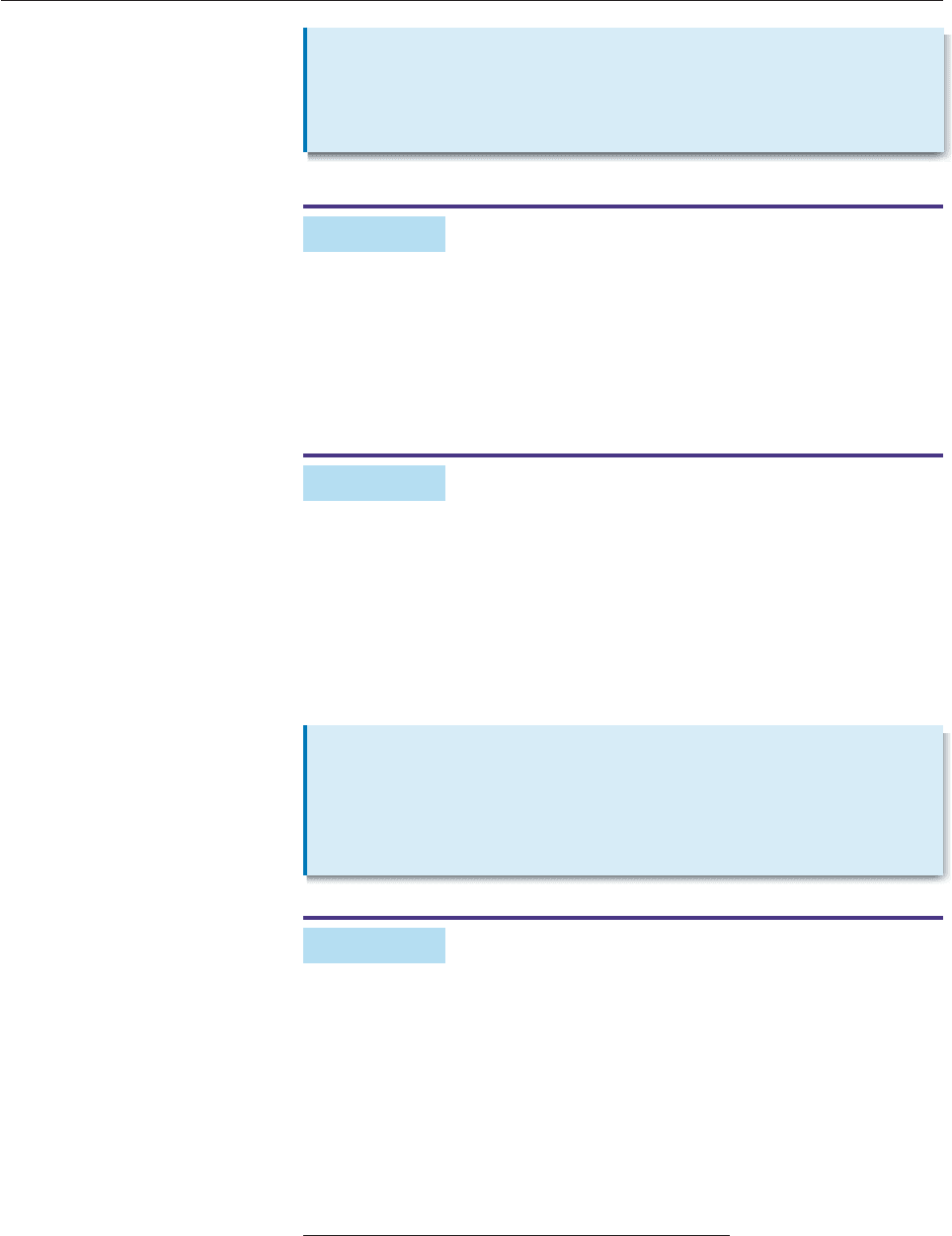
EXAMPLE 2
(a) x
2
9y
2
can be written x
2
(3y)
2
, a difference of squares. Therefore,
x
2
9y
2
(x 3y)(x 3y).
(b) y
2
7 y
2
(7
)
2
( y 7
)( y 7
).*
(c) 36r
2
64s
2
(6r)
2
(8s)
2
(6r 8s)(6r 8s)
2(3r 4s)2(3r 4s) 4(3r 4s)(3r 4s). ■
EXAMPLE 3
Factor: 4x
2
36x 81.
SOLUTION Since the first and last terms of 4x
2
36x 81 are perfect
squares, we try to use the perfect square pattern with u 2x and v 9:
4x
2
36x 81 (2x)
2
36x 9
2
(2x)
2
2
2x
9 9
2
(2x 9)
2
. ■
EXAMPLE 4
Factor:
(a) x
3
125 (b) x
3
8y
3
(c) x
3
12x
2
48x 64
SOLUTION
(a) x
3
125 x
3
5
3
(x 5)(x
2
5x 5
2
)
(x 5)(x
2
5x 25).
(b) x
3
8y
3
x
3
(2y)
3
(x 2y)[x
2
x
2y (2y)
2
]
(x 2y)(x
2
2xy 4y
2
).
940 APPENDIX 1 Algebra Review
Quadratic
Factoring
Patterns
Difference of Squares: u
2
v
2
(u v)(u v);
Perfect Squares: u
2
2uv v
2
(u v)
2
;
u
2
2uv v
2
(u v)
2
.
*When a polynomial has integer coefficients, we normally look only for factors with integer coefficients.
But when it is easy to find other factors, as here, we shall do so.
Cubic Factoring
Patterns
Difference of Cubes u
3
v
3
(u v)(u
2
uv v
2
)
Sum of Cubes u
3
v
3
(u v)(u
2
uv v
2
)
Perfect Cubes u
3
3u
2
v 3uv
2
v
3
(u v)
3
u
3
3u
2
v 3uv
2
v
3
(u v)
3
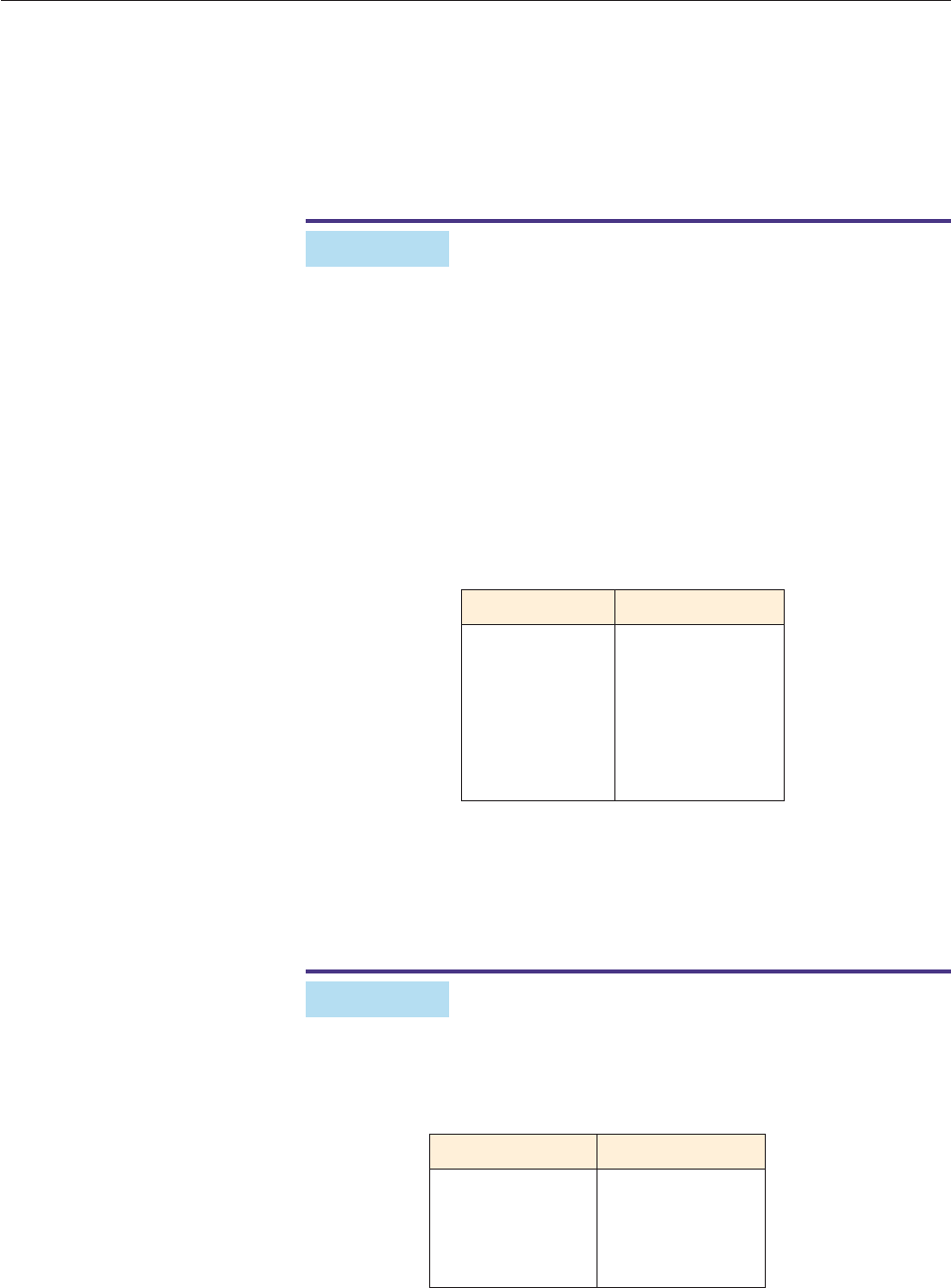
SECTION 1.C Factoring 941
(c) x
3
12x
2
48x 64 x
3
12x
2
48x 4
3
x
3
3x
2
4 3x
4
2
4
3
(x 4)
3
. ■
When none of the multiplication patterns applies, other techniques must be
used. The next example illustrates a method that works for quadratic polynomials
with leading coefficient 1.
EXAMPLE 5
Factor: x
2
9x 18.
SOLUTION We must find integers b and d such that
x
2
9x 18 (x b)(x d)
x
2
dx bx bd
x
2
(b d)x bd.
If the polynomials are equal, then their coefficients are equal term by term, so
9 b d and 18 bd.
In particular, b and d are integer factors of 18. The possibilities are summarized in
this table.
Note that we really didn’t have to list the negative factors, since their sums are
also negative and we must have b d 9. There is just one choice with sum 9,
namely, 3 and 6. So we have this factorization (which you should verify by mul-
tiplying out the right-hand side):
x
2
9x 18 (x 3)(x 6). ■
EXAMPLE 6
Factor: x
2
3x 10.
SOLUTION We must find factors x b and x d such that bd 10 and
b d 3. The table shows the possibilities.
Factors b, d of 18 Sum b d
1
18 1 18 19
2
92 9 11
3
63 6 9
(1)(18) 1 (18) 19
(2)(9) 2 (9) 11
(3)(6) 3 (6) 9
Factors b, d of 10 Sum b d
1(10) 1 (10) 9
(1)(10) 1 10 9
2(5) 2 (5) 3
(2)(5) 2 5 3
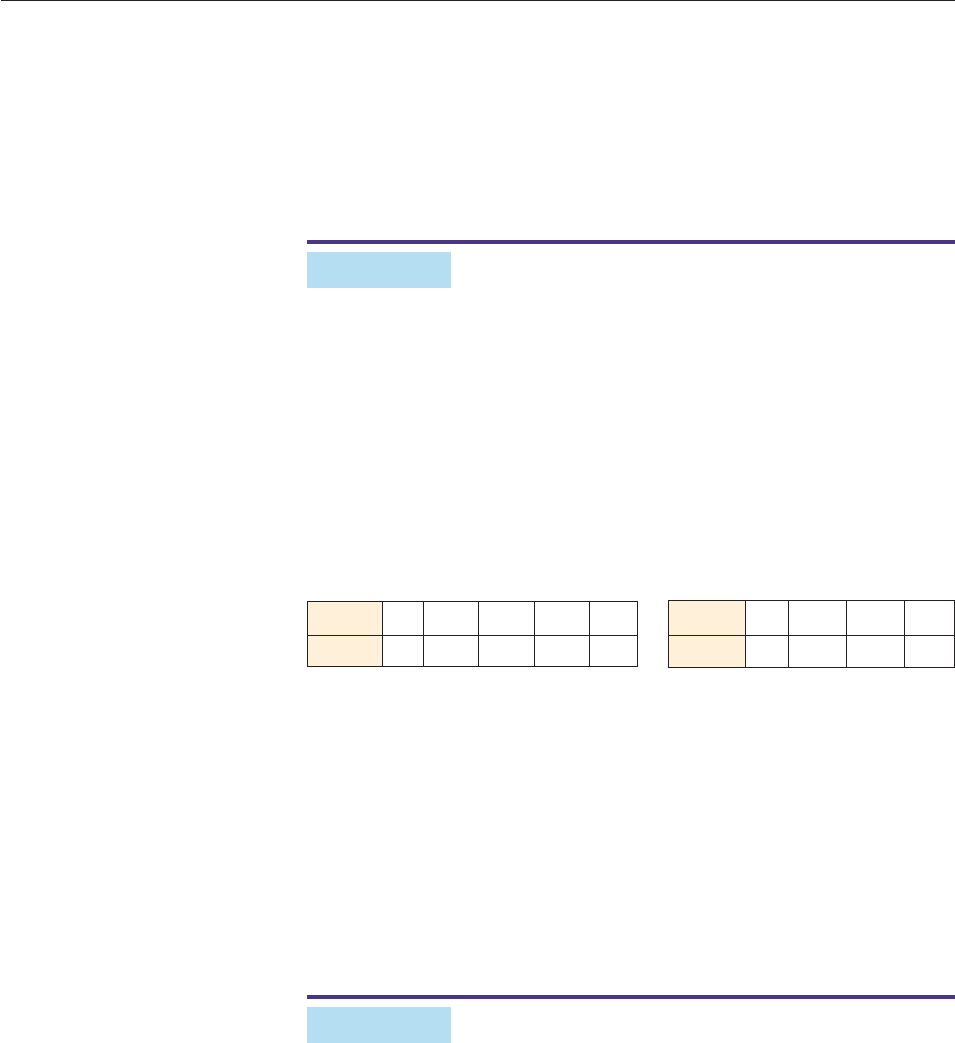
The only factors with product 10 and sum 3 are 2 and 5. So the correct fac-
torization is
x
2
3x 10 (x 2)(x 5). ■
Although we used tables in Examples 5 and 6 to summarize all the possibili-
ties, you can often do this without writing out a table by mentally checking the
various possibilities. The same idea works for factoring quadratic polynomials in
which the leading coefficient is not 1, as shown in the next example.
EXAMPLE 7
Factor: 6x
2
11x 4.
SOLUTION We must find factors ax b and cx d such that
6x
2
11x 4 (ax b)(cx d)
acx
2
adx bcx bd
acx
2
(ad bc)x bd.
Once again, the coefficients must be the same, term by term, on both sides. In par-
ticular, we must have
6 ac and 4 bd.
There are quite a few possibilities, as shown here.
Guided by the possibilities listed in the tables, we use trial and error to find the
right factors. Typically, it might go like this.
a 1, c 6 and b 1, d 4:
(ax b)(cx d) (x 1)(6x 4) 6x
2
10x 4 Incorrect
a 2, c 3 and b 4, d 1:
(ax b)(cx d) (2x 4)(3x 1) 6x
2
14x 4 Incorrect
a 2, c 3 and b 1, d 4:
(ax b)(cx d) (2x 1)(3x 4) 6x
2
11x 4 Correct ■
Substitution and appropriate factoring patterns can sometimes be used to fac-
tor expressions involving exponents larger than 2.
EXAMPLE 8
Factor: x
4
2x
2
3.
SOLUTION The idea is to put the polynomial in quadratic form. Note that
x
4
(x
2
)
2
and let u x
2
. Then
x
4
2x
2
3 (x
2
)
2
2x
2
3
u
2
2u 3 (u 1)(u 3)
(x
2
1)(x
2
3)
(x
2
1)(x
3
)(x
3
). ■
942 APPENDIX 1 Algebra Review
bd 4 b 1 2 4
d 4 2 1
ac 6 a 1 2 3 6
c 6 3 2 1

SECTION 1.C Factoring 943
EXAMPLE 9
Factor:
(a) x
6
y
6
(b) x
8
1.
SOLUTION Once again, we want to put each polynomial in quadratic form.
(a) Note that x
6
(x
3
)
2
and y
6
(y
3
)
2
. Let u x
3
and v y
3
. Then
x
6
y
6
(x
3
)
2
(y
3
)
2
u
2
v
2
(u v)(u v) [Difference of squares]
(x
3
y
3
)(x
3
y
3
)
(x y)(x
2
xy y
2
)(x
3
y
3
) [Sum of cubes]
(x y)(x
2
xy y
2
)(x y)(x
2
xy y
2
). [Difference of cubes]
(b) Note that x
8
(x
4
)
2
and let u x
4
. Then
x
8
1 (x
4
)
2
1 u
2
1 (u 1)(u 1) [Difference of squares]
(x
4
1)(x
4
1).
Observe that x
4
(x
2
)
2
and let v x
2
. Then
x
8
1 (x
4
1)(x
4
1)
[(x
2
)
2
1][(x
2
)
2
1]
(v
2
1)(v
2
1)
(v
2
1)(v 1)(v 1) [Difference of squares]
(x
4
1)(x
2
1)(x
2
1)
(x
4
1)(x
2
1)(x 1)(x 1). [Difference of squares] ■
Occasionally, a polynomial can be factored by regrouping.
EXAMPLE 10
Factor: 3x
3
3x
2
2x 2.
SOLUTION Write the polynomial as
(3x
3
3x
2
) (2x 2)
and factor a common factor out of each expression in parentheses:
3x
2
(x 1) 2(x 1).
Now use the distributive law (considering x 1 as a single quantity).
3x
2
(x 1) 2(x 1) (3x
2
2)(x 1) ■

944 APPENDIX 1 Algebra Review
EXERCISES 1.C
In Exercises 1–58, factor the expression.
1. x
2
4 2. x
2
6x 9
3. 9y
2
25 4. y
2
4y 4
5. 81x
2
36x 4 6. 4x
2
12x 9
7. 5 x
2
8. 1 36u
2
9. 49 28z 4z
2
10. 25u
2
20uv 4v
2
11. x
4
y
4
12. x
2
1/9
13. x
2
x 6 14. y
2
11y 30
15. z
2
4z 3 16. x
2
8x 15
17. y
2
5y 36 18. z
2
9z 14
19. x
2
6x 9 20. 4y
2
81
21. x
2
7x 10 22. w
2
6w 16
23. x
2
11x 18 24. x
2
3xy 28y
2
25. 3x
2
4x 1 26. 4y
2
4y 1
27. 2z
2
11z 12 28. 10x
2
17x 3
29. 9x
2
72x 30. 4x
2
4x 3
31. 10x
2
8x 2 32. 7z
2
23z 6
33. 8u
2
6u 9 34. 2y
2
4y 2
35. 4x
2
20xy 25y
2
36. 63u
2
46uv 8v
2
37. x
3
125 38. y
3
64
39. x
3
6x
2
12x 8 40. y
3
3y
2
3y 1
41. 8 x
3
42. z
3
9z
2
27z 27
43. x
3
15x
2
75x 125
44. 27 t
3
45. x
3
1
46. x
3
1 47. 8x
3
y
3
48. (x 1)
3
1 49. x
6
64
50. x
5
8x
2
51. y
4
7y
2
10
52. z
4
5z
2
6 53. 81 y
4
54. x
6
16x
3
64 55. z
6
1
56. y
6
26y
3
27 57. x
4
2x
2
y 3y
2
58. x
8
17x
4
16
In Exercises 59–64, factor by regrouping and using the distrib-
utive law (as in Example 9).
59. x
2
yz xz xy 60. x
6
2x
4
8x
2
16
61. a
3
2b
2
2a
2
b ab 62. u
2
v 2w
2
2uvw uw
63. x
3
4x
2
8x 32 64. z
8
5z
7
2z 10
THINKER
65. Show that there do not exist real numbers c and d such that
x
2
1 (x c)(x d).
1.D Fractional Expressions
Quotients of algebraic expressions, such as
x
x
2
1
2
,
x
3
4
1
x
2
x
,or
3
x
3
(x
x
1
7
)
are called fractional expressions. Throughout this section, we assume that all de-
nominators are nonzero.
The basic rules for dealing with fractional expressions are essentially the
same as those for ordinary numerical fractions. In particular, the usual cancella-
tion property holds.
EXAMPLE 1
Simplify:
(a)
3
5
6
6
(b)
x
x
4
2
1
1
.
Cancellation
If k 0, then
k
k
a
b
a
b
.

SECTION 1.D Fractional Expressions 945
SOLUTION
(a) Factor numerator and denominator:
3
5
6
6
9
7
4
8
7
9
2
4
4
Cancel the common factor 4:
7
9
2
1
9
4
.
(b) The same procedure works for the rational expression.
Factor the numerator:
x
x
4
2
1
1
(x
2
x
2
1)
(x
2
1
1)
Cancel the common factor x
2
1:
x
2
1
1
x
2
1 ■
From arithmetic, we know that
2
4
3
6
.
Note that the cross-products are equal: 2
6 4
3. The same thing is true in the
general case.
Proof Suppose
a
b
d
c
.
Multiply both sides by bd:
a
b
bd bd
d
c
Use cancellation: ad bc
Conversely, if ad bc, then dividing both sides by bd and cancelling shows that
a
b
d
c
. ■
EXAMPLE 2
We know that
x
2
x
2
x
2
x
2
x
x
1
because the cross-products are equal:
(x
2
2x)(x 1) x
3
x
2
2x and (x
2
x 2)x x
3
x
2
2x.
■
A fraction is in lowest terms if its numerator and denominator have no com-
mon factors except 1.
EXAMPLE 3
Express
x
x
2
2
3
x
x
6
2
in lowest terms.
Equality Rule
a
b
d
c
exactly when ad bc.
